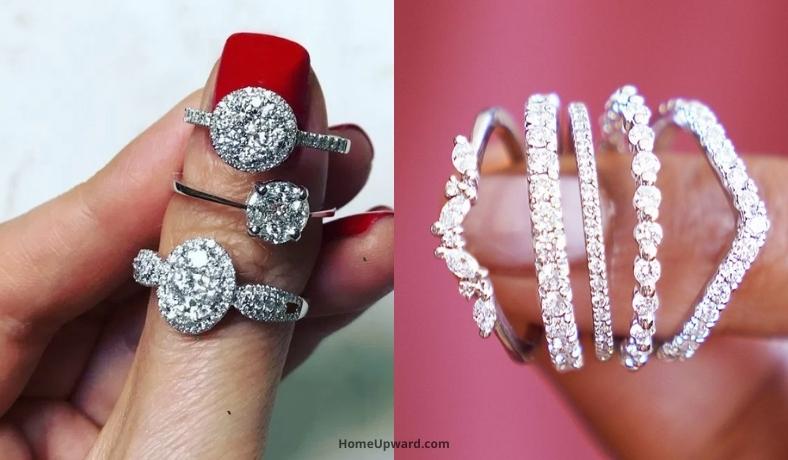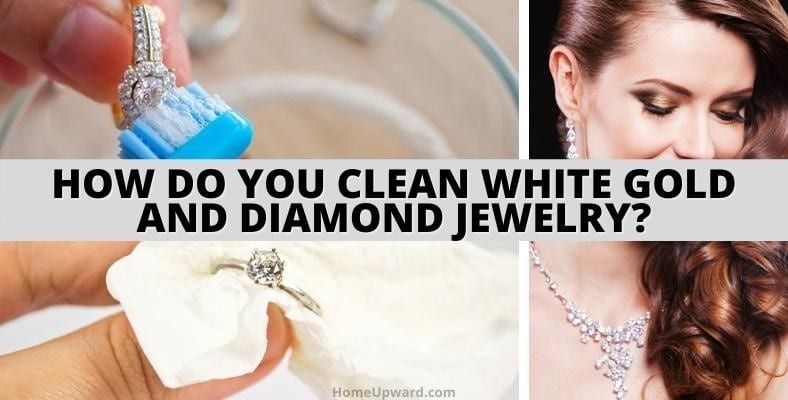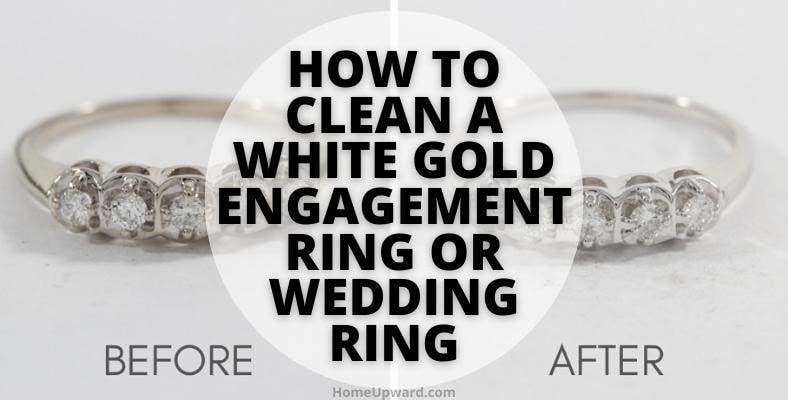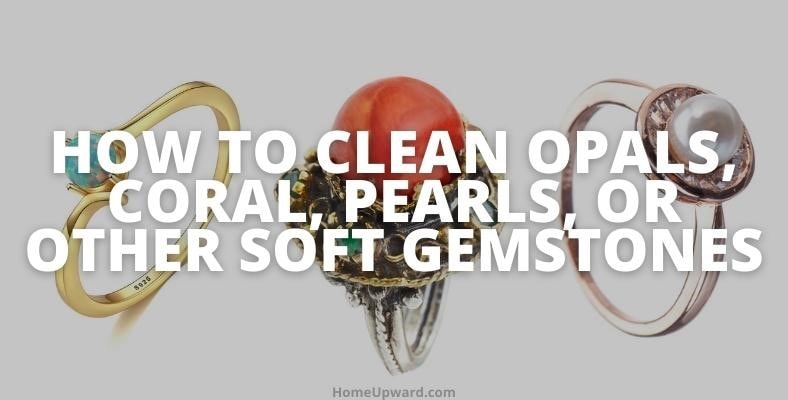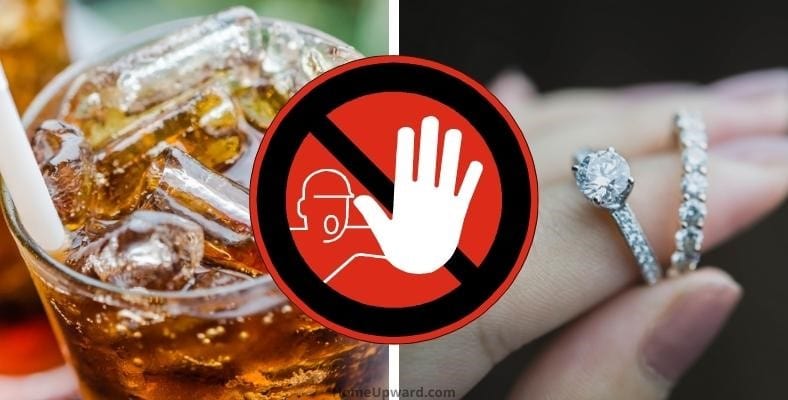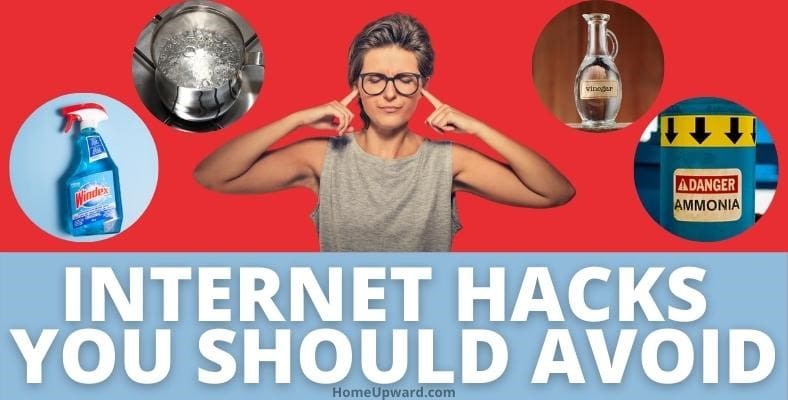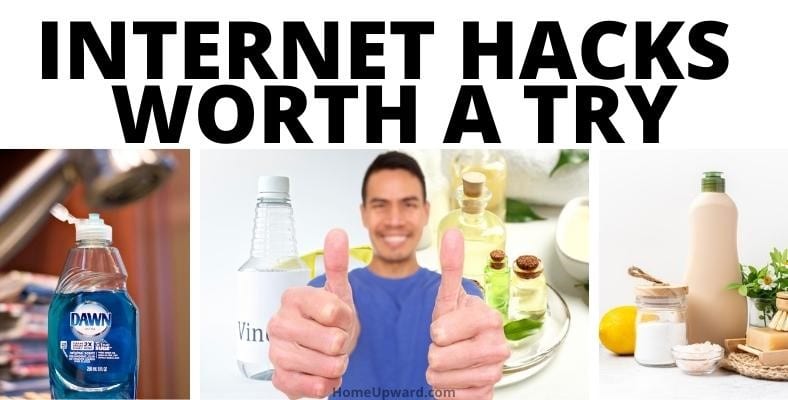Learn how to clean white gold and diamonds at home and never have to pay for an expensive professional cleaning again.
Don’t trust those viral Instagram videos or crazy hacks you see online. Stick with these simple cleaning methods backed by professional gem experts to ensure your jewelry stays in pristine shape forever.
Contents
How do you clean white gold and diamond jewelry?
The best way to clean white gold is a light scrub. You can even clean white gold or other jewelry at home with small supplies in under 10 minutes!
How to clean white gold and diamonds
When your diamonds or settings become all messy with grease and particles, the beauty of the jewelry can greatly reduce. A simple cleaning can return your white gold and diamonds to their original sparkle!
To clean your jewelry:
- Mix 2-parts warm (not hot!) water with 1-part detergent. Dawn, dish soap, or a regular detergent should do the trick!
- Soak for a few minutes in the mixture. Never exceed 30 minutes in total.
- Use a soft, gentle bristled brush, such as a toothbrush, to gently brush the stones and metal. Thoroughly brush the entire piece.
- Rinse the jewelry in your solution. Shake it a little under the water to loosen or remove anything sticking around!
- Remove the piece from the water. check through it by holding it up to bright, white light. If you see more dirt or cloudiness, scrub the stones or setting again with your brush.
- Rinse with clean water. Lightly brush along the entire exterior while rinsing to ensure any residue is removed.
- Dry with a clean, soft cloth, such as microfiber or a polishing cloth.
- Hold the ring up to the light again. If it’s still dirty, repeat the process.
If you have dirt or buildup that is particularly remained for long, don’t give up hope!
A great option for those hard-to-remove spots is toothpaste! A general-purpose toothpaste will act as a gentle abrasive to remove stubborn dirt.
When using toothpaste, avoid anything that has extra chunks, beads, or flakes, as well as anything advertised for whitening. Stick with the cheap, universal, standard white toothpaste.
How to clean a white gold engagement ring or wedding ring
The best method to clean your wedding ring or any precious jewelry is to stick with the basics.
The best way to clean white gold – or any piece – is to use warm water and a couple of drops of dish soap.
- Add detergent to some water in a small bowl, and let your jewelry soak for 10-15 minutes.
- Use a baby toothbrush or a new toothbrush with soft, gentle bristles to scrub the stones and metal. An unused cotton swab is also a great way to get into all the nooks dirt and gunks could be hiding!
- Rinse your piece in clean water, and use a microfiber or soft cloth to dry it. Inspect your jewelry under a bright, natural, white light to ensure it is spotless.
- Repeat the process if you’re not happy with the results.
For particularly stubborn grime, use toothpaste.
How do you clean opals, coral, pearls, or other soft gemstones?
Rings with soft gemstones, glue, metal plates, or porous metals should never be left in water. Mix the dish soap and water solution as usual, but dampen the cloth and use circular motions to clean the jewelry.
A great option is to invest in quality polishing cloth. These cloths are made with a material that won’t shed, will clean your jewelry, and can be used over and over again.
Can you clean white gold with Coke?
Don’t listen to the internet – cleaning white gold with Coca Cola is not a good idea! In fact, you can end up with nasty residue in the tiny little crevices in your jewelry.
Who needs something that attracts ants and other bugs? Additionally, carbonated drinks such as Coke can be acidic and harmful to some surfaces over time.
Other internet hacks you should avoid
The internet is full of cleaning “hacks” that you should stay away from.
Not only will many of these substances create buildup on your jewelry, but some of them can also even tarnish or permanently damage your stones and metal!
Hacks and “tricks” to avoid include:
- Combining aluminum foil, boiling water, and baking soda to clean or polish dull silver is not a good idea.
- Vinegar in a bowl. Vinegar can clean 18-carat and above gold, and even some higher-grade silver. However, most gemstones (including pearls) will be damaged by vinegar’s acidity.
- Using ammonia to clean any piece of jewelry is a bad idea.
- Spraying your white gold with Windex. (Don’t do it! Windex can contain acids and eat away at metal plating, gold, or any soft gemstones.)
- Soaking jewelry in boiling water. This can and will result in warping or discoloration.
Internet hacks worth a try
The worldwide web is not totally empty of useful advice. You can sometimes find some solid, quality advice that will not cause total damage.
Here are some internet hacks you might enjoy:
- The white vinegar and baking soda method blogs rave about. (Do not use on soft or porous stones or metal, or plated jewelry.)
- Using essential oils like tea tree and witch hazel to clean your ring. (Again, avoid with soft or porous jewelry.)
- Mixing a cleaning solution of salt, baking soda, and dish detergent. (This one is not bad – just avoid porous metals like antique silver or anything gold-plated.)
- Clean with dish detergent and blow-dry with a hairdryer. (Give this tip a round of applause! Just don’t use the highest heat setting, and your jewelry should come out streak-free!)
Note: We still advise you stick with one of the cleaning methods we’ve detailed above or take your jewelry to a professional to clean and polish.
How to clean tarnished white gold
If your white gold, gold, or silver jewelry has tarnished, it will need a chemical solution or a professional cleaning to bring it back to its original shine.
Look for tarnish remover or white gold polish made to remove or reverse the effects of tarnish. Goddard’s Silver Dip has been around for generations, as well as some old-fashioned soda crystals. (These are sodium carbonate, not pop or the soda you drink!)
Gently use a microfiber or polishing cloth to buff the metal until it shines again!
How does white gold get tarnished? Is it permanent?
Tarnishing is normal and is part of the normal wear and tear of jewelry’s lifespan.
Tarnish happens when the surface of your white gold is exposed to chemicals, water, pollution, and oil for a long period. (This includes the oils you naturally have on your hands!)
Other metals that will tarnish include:
- Brass
- Copper
- Sterling silver
- Silver
- Whitened silver
- Blackened or oxidized silver
- 9-carat and 14-carat gold (both white and yellow!)
Certain skin types can cause tarnishing to happen within hours. Even living in a city with a lot of air pollution can cause some precious metals to tarnish!
Metals that will not tarnish are:
- Gold over 18-carats
- Platinum
- Anodised aluminum
- Niobium
- Plated metals such as gold plate, rhodium, or black ruthenium
- Stainless steel based designs (example: plated stainless steel bands or necklaces)
While these metals will not tarnish, they do have the potential to scratch or get dull over time.
If your non-tarnishable metals have lost their brightness, give them a good scrub with a soft cloth, or use the toothpaste method listed above.
Proper storage will reduce the rate at which they tarnish, as well as prevent unnecessary scratches. Store your jewelry in a dry, cool, dark spot. (That means you should avoid clear containers or areas that get direct sunlight.)

